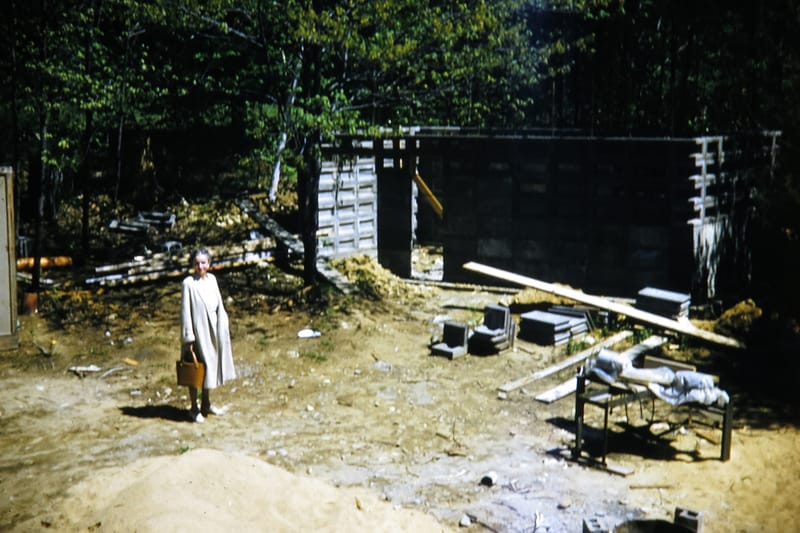Pedals & Pathways: Survey, Idaho Stop, Sammy’s Law, Dervla Murphy, RAGBRAI
Dervla Murphy, born in 1931, grew up in the tiny ancient town of Lismore in Ireland, where the local abbey was founded in the 7th century. For her 10th birthday, she received a second-hand bicycle.


Navigating Manchester’s Urban Paths
“The lessons learned on the road—resilience, adaptability, and mindfulness—are invaluable in everyday life.”
– cyclist Andre Breton
Recently I was out running some errands on a cold day and saw at least 10 cyclists. My car said the temperature was 24 Fahrenheit. A few days later I was out again and saw a cyclist when the temp was 17 Fahrenheit. Clearly, local people are willing and able to ride in winter. Keep an eye peeled for them and give them a thumbs up!
In this edition, some of our topics will take us far afield from Manchester, but they’re still relevant to us. Let’s talk about:
- Ongoing Survey
- See-Click-Fix
- Idaho Stop in NH
- Sammy’s Law in NYC
- Dervla Murphy around the world
- RAGBRAI 2025
Don’t Forget our Survey
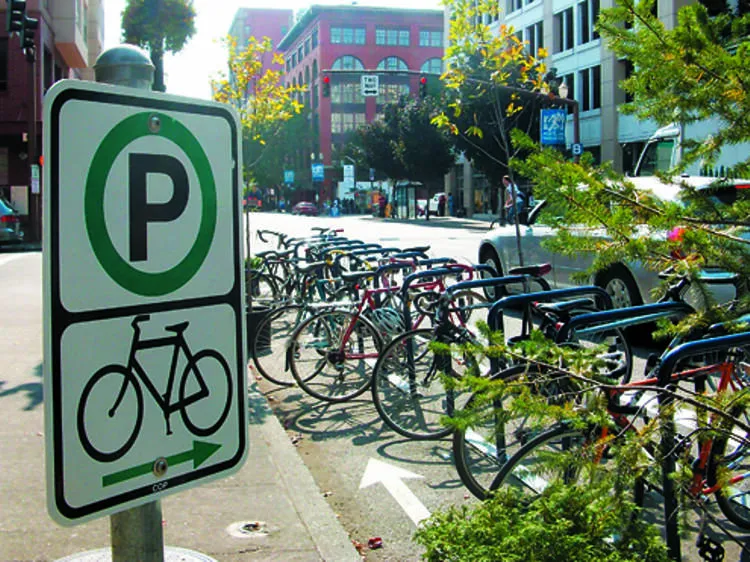
We want to hear from you!
Tell us your thoughts and opinions on bike parking in our city. Take the survey at this link.
And please share the survey with all your friends! The more, the better!
See-Click-Fix is a Great Tool!
Walking down the sidewalk and see a problem in the city? Report it using a mobile app, and the city will then fix it ASAP.
The app is available for iPhones and Android phones, from either the iOS App Store or the Google Play Store. Search for “seeclickfix manchester.” The app currently shows up as “Manchester NH, Connect.” But it’s frequently referred to as “See-Click-Fix.” Because that’s how it works: SEE a problem, CLICK the app, and the city FIXes the problem. It will allow you to include photos of the issue you report.

Essentially it’s a streamlined way to report problems, greatly increasing DPW’s ability to see trouble quickly. DPW (Department of Public Works) monitors the service daily, constantly adding to their list of prioritized issues in need of attention. I’ve used it and found it to work great!

Idaho Stop in NH
Everyone wants to reduce fatalities among road users. Yet, from 2011 to 2020, cyclist fatalities rose 38%. And in 2020, 26% of those fatalities occurred at intersections. If only there were some way to safely get cyclists through intersections faster, so they spend less time in that danger zone.
It turns out that Idaho accomplished this way back in 1982. They passed a law allowing cyclists to essentially treat a stop sign like a yield sign, not needing to come to a complete halt, but yielding right-of-way, and able to proceed after ensuring the intersection was clear. Since then, seven other states have passed similar laws, now commonly known as the “Idaho Stop.” These laws do not negate a cyclist’s responsibility to yield to other traffic before crossing an intersection or to follow all work zone traffic rules. Here in NH, House Rep Seth Miller [D] of Strafford introduced NH House Bill 249 this January, which would essentially bring the Idaho Stop to NH. The full text of the bill can be seen at this link. It’s not long and is worth a read.

After Idaho adopted the law, cyclist injuries from traffic crashes declined by 14.5% the following year.
Delaware passed a similar law in 2017, and traffic crashes involving cyclists at stop signs fell by 23% in the next 30 months.
If it increases safety, I’m all for it!
Sammy’s Law Signed in NYC
“A mistake by a driver or someone walking or biking should not be a death sentence.” — Gary Eckstein

In October 2012, twelve-year-old Sammy Eckstein was out playing in Brooklyn, NY. While retrieving a soccer ball, he was struck by a van and killed. Family members, friends, and concerned citizens quickly began to advocate for lower speed limits in the area. It came to light that NYC could not lower the speed limit even if it wanted to — the minimum speed limit was legislated by the state government in Albany. (Other states, including NH, have similar laws.)
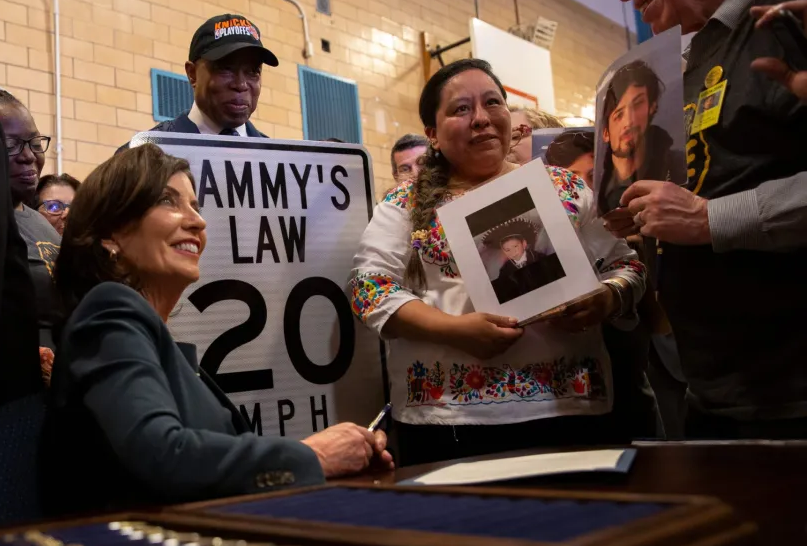
So began a long slog. After a decade, the law known as “Sammy’s Law” was passed and signed, allowing NYC to set speed limits as low as 20 MPH in some areas, even 10 MPH for roads undergoing safety-related redesigns.
No one thinks this will be a panacea. But, to quote Juliane Williams, whose daughter was killed on a sidewalk in 2016 by a speeding driver in a Porsche, “It would help, it would do something.”
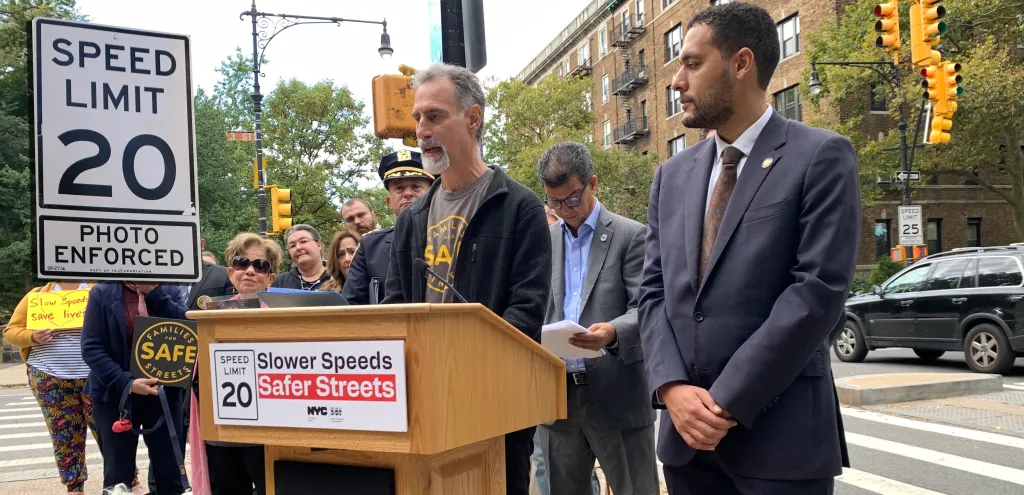
Gary Eckstein, Sammy’s father, spoke eloquently:
“If traffic had been moving more slowly that afternoon, Sammy and the driver of the van would have had more time to see each other, to take evasive action, to avoid a collision, and if an impact could still not have been avoided, it likely would have been less severe.
“People make mistakes, and we need to design our streets and set up the rules of the road so there is some margin for error. A mistake by a driver or someone walking or biking should not be a death sentence, and one of the most effective ways to do that is to slow down traffic.
“At 20 miles per hour, a driver’s field of vision widens, and there’s far more time to see and react to the unexpected. There’s more time for someone walking or biking to see and avoid an errant driver, and the force of impact at 20 miles an hour is so very much less that it’s less likely to cause death or serious injuries than 25 or 30 miles per hour.”
The new process for lowering speed limits in NYC promises to be orderly. The city DOT must notify community boards of planned changes, and then have a 60-day comment period. Proposals must be voted on by the City Council, to be followed by a six-month period in which warnings are given instead of tickets. Roads outside of Manhattan with at least three lanes in a single direction will stay at 25 mph.
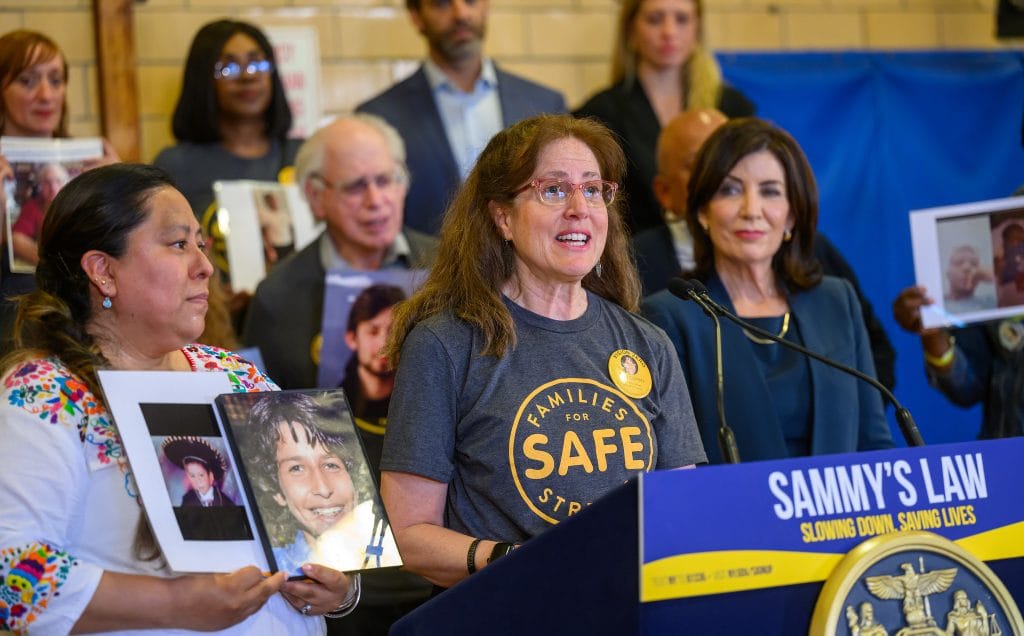
The city has already identified 250 locations to have speed limits lowered in 2025, with a focus on areas near schools.
Additional coverage:
New Hampshire has a state law that prevents local authorities from setting any speed limit lower than 25 mph, except for a single annual seasonal speed limit, which cannot be lower than 20 mph, and cannot exceed 4 months in duration.
Dervla Murphy Around The World
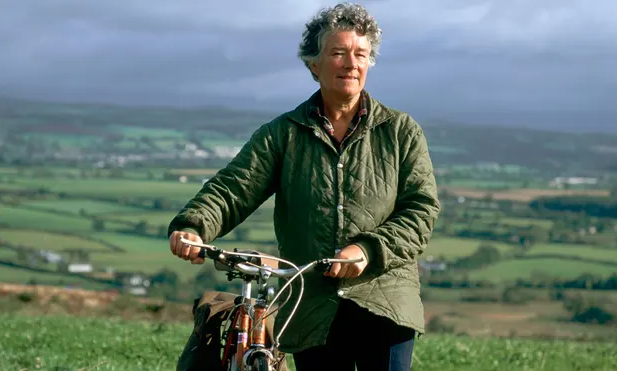
“You are much more likely to make friends with people if you arrive alone on a bicycle.” — Dervla Murphy
I’ve only recently discovered Dervla Murphy, and I’ve become fascinated by her. In fact, I may be developing a crush…
Travel writer Dervla Murphy, born in 1931, grew up in the tiny ancient town of Lismore in Ireland, where the local abbey was founded in the 7th century. For her 10th birthday, she received a second-hand bicycle along with an atlas, sparking both body and mind.

Shortly thereafter she realized that if she just kept pedaling long enough, she could ride all the way to India. Though it took her another 20 years, eventually she did it. And kept doing similar rides most of the rest of her life.
Following three significant deaths (her lover in 1958, then her father in 1961, then her mother in 1962), she was 32 years old with nothing more holding her back, so she planned her trip and set off in the winter of 1963, which put her on her bicycle during one of Europe’s harshest winters. During her travels, she was attacked by wolves in Bulgaria but killed one with a pistol. That pistol later helped her ward off a would-be rapist in Turkey.
She kept a diary during the trip, and afterward published it as the book “Full Tilt: Ireland to India with a Bicycle.” Incidentally, she called her bicycle Roz, short for Rocinante, after Don Quixote’s horse.
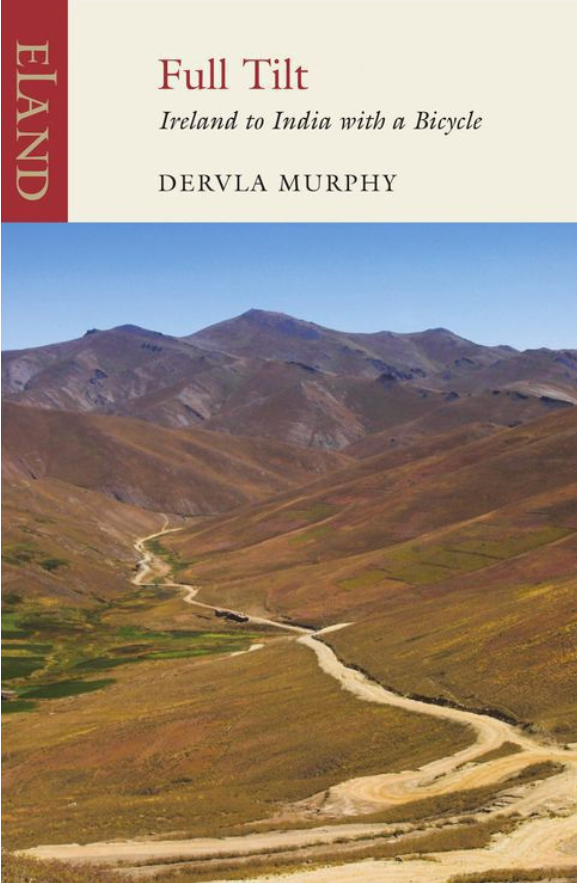
Despite the wolf attack, being robbed in Siberia and threatened by soldiers in Ethiopia, she maintained that her worst accident occurred at home in Lismore, when she shattered an arm after tripping over her cats.
She made many other long bicycle journeys, frequently solo, sometimes with her daughter Rachel as a companion. Her travels took her to four continents, and she wrote 26 books, many in the diary style of Full Tilt, documenting the places and people she encountered. The Observer wrote, “Dervla Murphy is that rare traveler who can make the world seem both wider and more intimate.“
She was a testament to the rich joys of travel, of minimalism, and of genuine human connection. She died in 2022.

Publish Eland Books’ web page for Dervla Murphy
Dervla Murphy at the Banff Mountain Film & Book Festival, 2011 (30-minute video interview)
Bicycles Invade Iowa for RAGBRAI 2025
“…an economic impact of $24 million…”
OK, who among you have ever heard of something called RAGBRAI? I’ll bet few of you have.
Way back in the stone age that was the late 90’s I was working at a small software firm in Bedford NH, and we had a woman there who, one spring, kept raving to us about an event coming up in the summer that she was super excited to attend called “rag brye” (or so it sounded to us).
“What’s rag brye?” we all asked in unison.
She explained it was an enormous week-long gathering of bicyclists who ride all the way across the state of Iowa, from west to east, camping each night as they go. “It’s an annual event,” she explained, “and RAGBRAI is an acronym for ‘Register’s Annual Great Bicycle Ride Across Iowa.’ The Register is the newspaper in Des Moines which is the capital.” She had gone at least once before and it seemed to have left a powerfully positive impression.
The official summary says:
RAGBRAI is the oldest, largest, and longest recreational touring bicycle ride in the world. Started in 1973 by Des Moines Register reporters John Karras and Donald Kaul, RAGBRAI is a seven-day bicycle tour that goes from the Missouri River to the Mississippi River with stops in overnight towns along the way. One of the largest tourism events in the country, a 2008 study by the University of Northern Iowa estimates RAGBRAI’s economic impact between $24 million to $25 million for the weeklong ride.
It sounds like a blast. Not a race, but a tourism event. Festive stops in little midwestern towns along the way. Distances covered each day typically measure about 70 miles. I might have to find a way to participate. Photos follow.


The tour starts at the western edge of Iowa, at either the Missouri River or the Big Sioux River. So for full authenticity, you dip your rear wheel in the river at the start. Then at the end, you dip your front wheel in the Mississippi River.
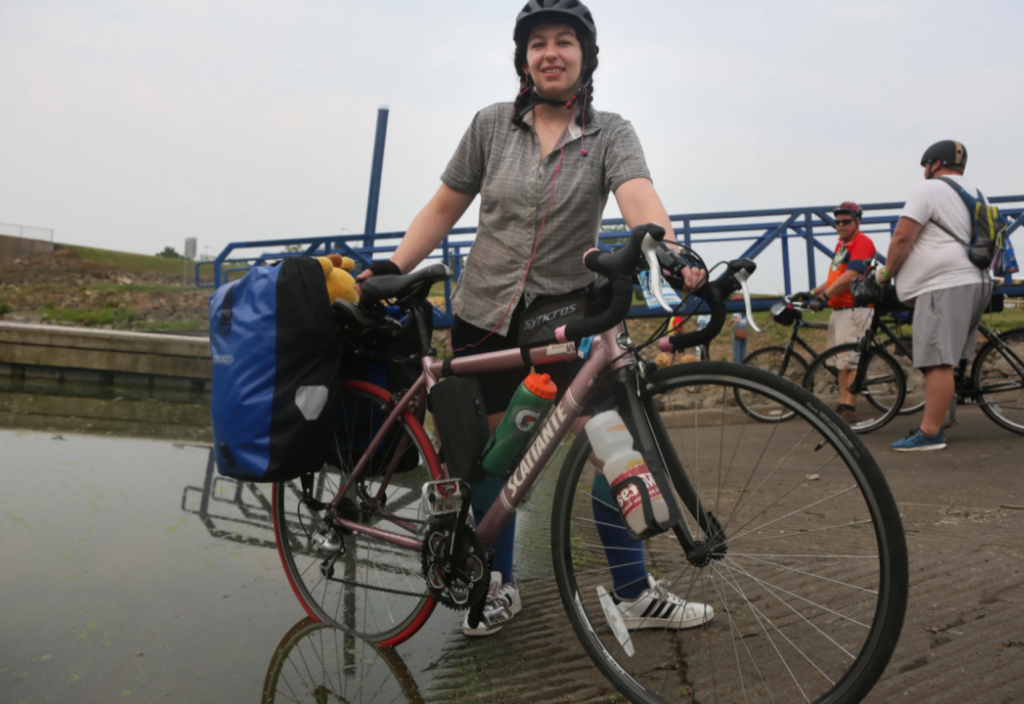


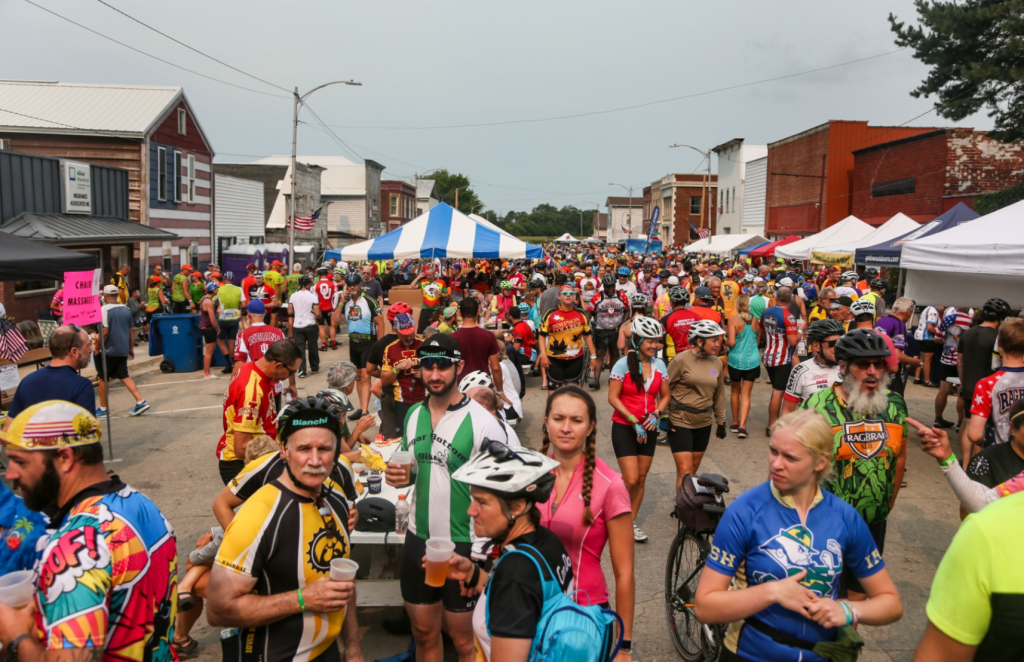
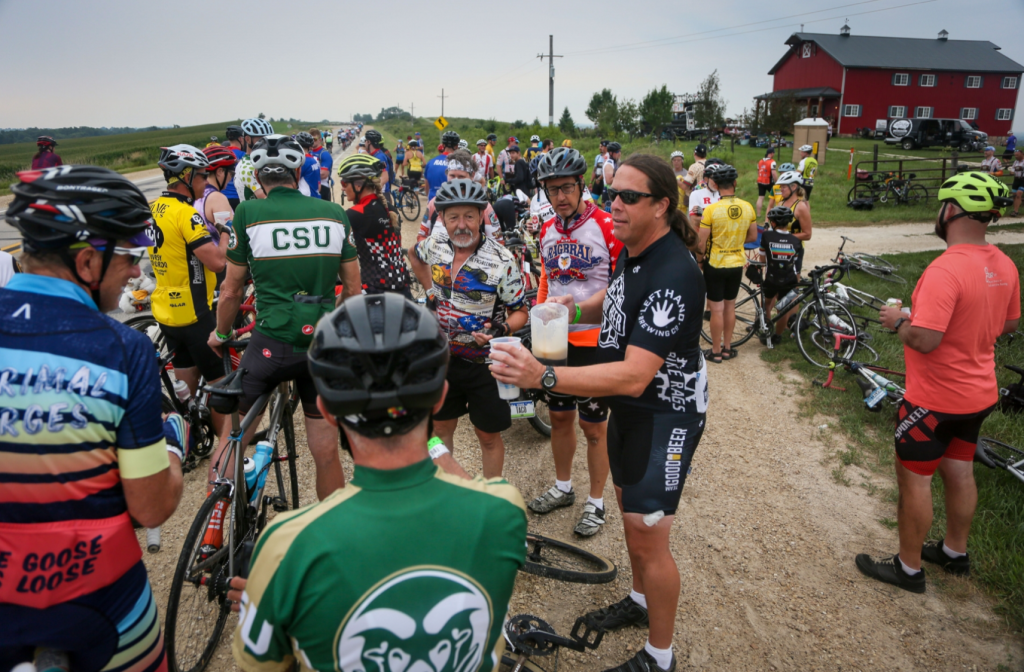



This looks like a lot of fun. Why don’t we have a Great Bike Ride Across New Hampshire? G-BRANH, anyone? Last year we had the Tour de New Hampshire Rides, which certainly looked great. Let’s hope that event returns this year.
Call for Input
We very much want to hear from you! Do you have any questions or concerns? What topics would you like us to cover? Send your feedback our way and we’ll get on it! We want to ensure this column meets your needs.
Stay safe and warm and have fun out there!


